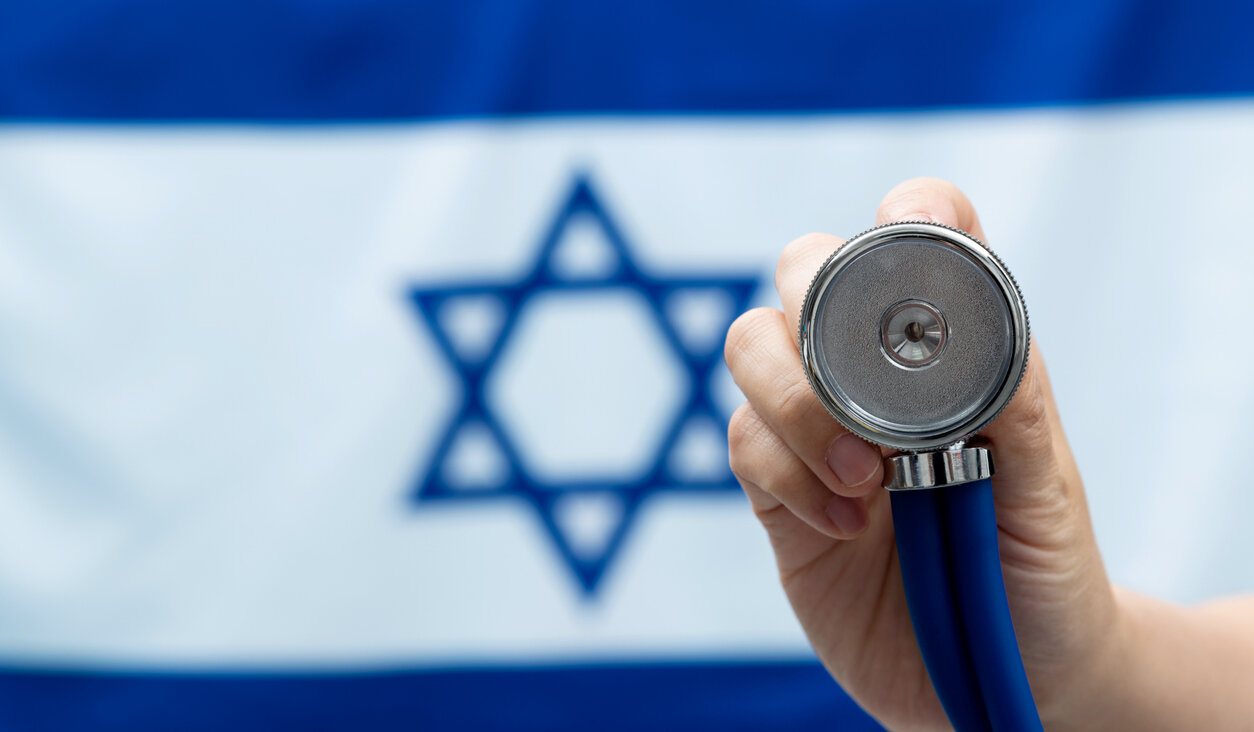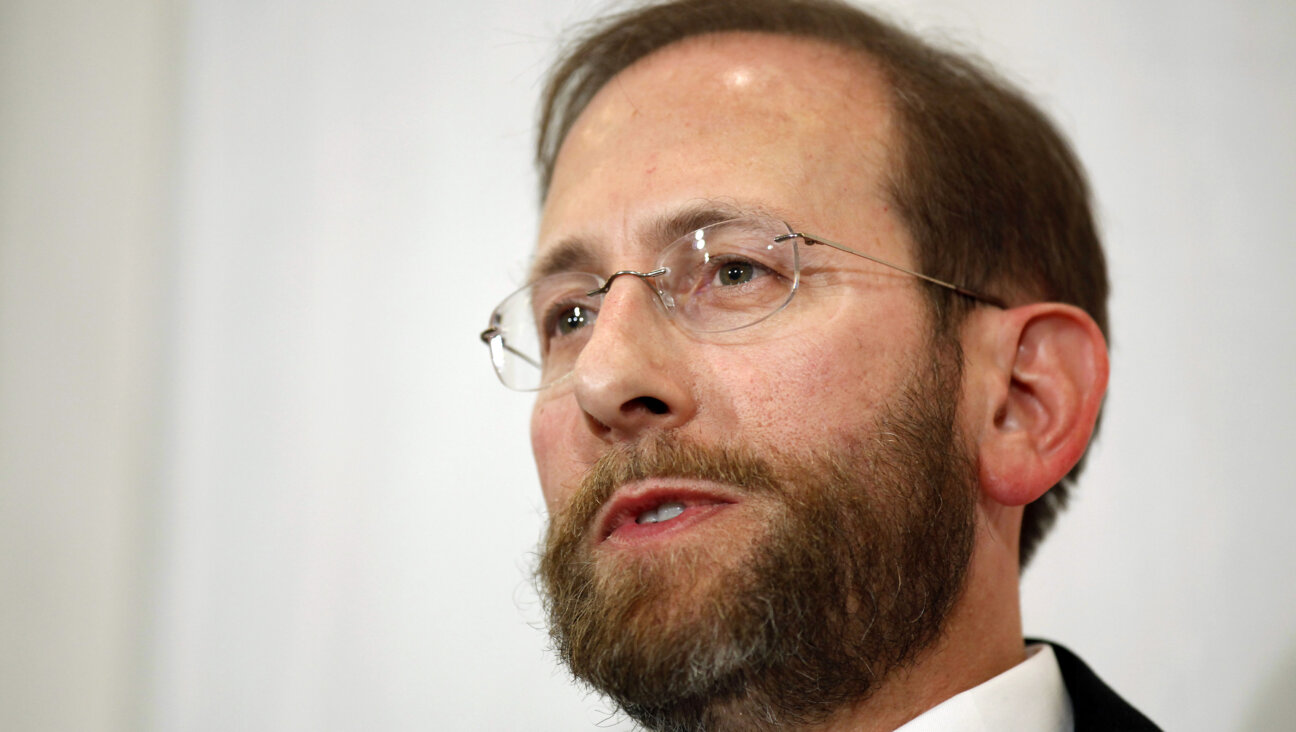American Jewish Student Loses Eye During West Bank Protest of Israel
Overshadowed by the events of the Gaza-bound flotilla, the May 31 incident at Kalandia crossing near Ramallah went almost unnoticed. Little was reported on the injury of Emily Henochowicz, a 21-year-old American Jewish student who lost her left eye after being hit by a tear gas canister shot by Israeli soldiers during a pro-Palestinian protest.
Henochowicz, an art student at Cooper Union in New York, was on an exchange program at the Bezalel Academy of Arts and Design in Jerusalem. She grew up in the Washington suburb of Potomac, Md.; her father was born in Israel, and she holds an Israeli passport by birth.
During this recent stay in Israel, she frequently joined pro-Palestinian demonstrations, whether to protest the security barrier or the alleged confiscation of Palestinian homes. Her impressions, delicately drawn and posted on her website, show Henochowicz’s journey through the flashpoints of Israeli-Palestinian friction in the West Bank. One, called the Walaja Cake, was drawn after she participated in a demonstration in the small village of Wallaje whose land is a source of dispute. The caption accompanying the drawing lists the ingredients for the “Walaja Cake”: “One layer of determined activist over a layer of obediently angry army men, and a layer of camera people (to give it that worldly flavor) with a bulldozer on-top!”
The events that led to the May 31 injury are in dispute. Pro-Palestinian activists started off protesting the Gaza flotilla incident when, at the Kalandia checkpoint, one of the main entry routes to Ramallah, the protesters encountered Israeli border patrol soldiers who tried to break up the demonstration, which lacked a permit. A border patrol spokesman said in a statement that soldiers shot tear gas canisters according to the approved protocol for this ammunition. These rules require tear gas to be shot at a 45-degree angle and from a safe distance, so as not to hit protesters directly.
The border patrol conducted an internal investigation of the case and concluded that all actions taken by the soldiers were appropriate. The Israel Defense Forces did not provide an explanation for Henochowicz’s injury, but in the past have explained that similar injuries were unfortunate accidents, since there is no way to completely control the trajectory of tear gas or rubber bullets.
But activists standing next to Henochowicz offered a different account. Soren Johanssen from Sweden said, in a statement made public by the International Solidarity Movement, that border patrol soldiers shot directly at the protesters. “They fired many canisters at us in rapid succession,” said Johanssen who, according to ISM, stood next to Henochowicz. “One landed on either side of Emily, then the third one hit her in the face,” he said.
Henochowicz was rushed to Hadassah Medical Center in Jerusalem after losing her left eye, breaking her jaw and suffering multiple wounds to her face, according to her family members and a statement issued by Cooper Union.
“It is becoming increasingly common for soldiers and policemen to use riot control devices as weapons,” said Michael Sfard, a Tel Aviv attorney who is representing Henochowitz. Since April 2009, this is the third time Sfard has represented protesters hurt by the firing of tear gas.
The first protester was a Palestinian, Bassam Abu Rahma, who was killed by a direct hit in Bilin. The other was Tristan Anderson, an American citizen who returned to the United States early this month after spending more than a year in an Israeli hospital, where he was treated for critical wounds he suffered from a tear gas canister. Both of these cases are still under investigation.
Sfard has filed a petition with the Israeli police to open a criminal investigation into the shooting incident that led to Henochowicz’s injury.
Henochowicz is now back in the United States and is undergoing further surgical treatment, although neither her family nor her lawyer would provide any details.
Contact Nathan Guttman at [email protected]
The Forward is free to read, but it isn’t free to produce

I hope you appreciated this article. Before you go, I’d like to ask you to please support the Forward.
Now more than ever, American Jews need independent news they can trust, with reporting driven by truth, not ideology. We serve you, not any ideological agenda.
At a time when other newsrooms are closing or cutting back, the Forward has removed its paywall and invested additional resources to report on the ground from Israel and around the U.S. on the impact of the war, rising antisemitism and polarized discourse.
This is a great time to support independent Jewish journalism you rely on. Make a gift today!
— Rachel Fishman Feddersen, Publisher and CEO
Support our mission to tell the Jewish story fully and fairly.
Most Popular
- 1

Culture Trump wants to honor Hannah Arendt in a ‘Garden of American Heroes.’ Is this a joke?
- 2

Opinion The dangerous Nazi legend behind Trump’s ruthless grab for power
- 3

Fast Forward The invitation said, ‘No Jews.’ The response from campus officials, at least, was real.
- 4

Opinion A Holocaust perpetrator was just celebrated on US soil. I think I know why no one objected.
In Case You Missed It
-

Culture In a Haredi Jerusalem neighborhood, doctors’ visits are free, but the wait may cost you
-

Fast Forward Chicago mayor donned keffiyeh for Arab Heritage Month event, sparking outcry from Jewish groups
-

Fast Forward The invitation said, ‘No Jews.’ The response from campus officials, at least, was real.
-

Fast Forward Latvia again closes case against ‘Butcher of Riga,’ tied to mass murder of Jews
-
Shop the Forward Store
100% of profits support our journalism
Republish This Story
Please read before republishing
We’re happy to make this story available to republish for free, unless it originated with JTA, Haaretz or another publication (as indicated on the article) and as long as you follow our guidelines.
You must comply with the following:
- Credit the Forward
- Retain our pixel
- Preserve our canonical link in Google search
- Add a noindex tag in Google search
See our full guidelines for more information, and this guide for detail about canonical URLs.
To republish, copy the HTML by clicking on the yellow button to the right; it includes our tracking pixel, all paragraph styles and hyperlinks, the author byline and credit to the Forward. It does not include images; to avoid copyright violations, you must add them manually, following our guidelines. Please email us at [email protected], subject line “republish,” with any questions or to let us know what stories you’re picking up.
















